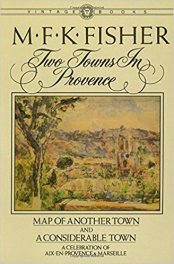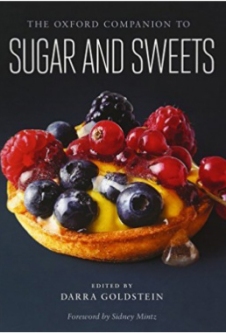 THE COOKERY BOOK OF LADY CLARK OF TILLYPRONIE
THE COOKERY BOOK OF LADY CLARK OF TILLYPRONIE
INTRODUCTION by GERALDENE HOLT
Extract from Introduction:
“MOST KEEN COOKS collect recipes – their own or others people’s – sometimes scribbled on a scrap of paper or torn from a newspaper or magazine. Few though, equal the astonishing feat of Lady Clark of Tillypronie, who filled more than three thousand pages of manuscript, as Catherine Frere says, ‘not only written over every available margin, but often crossed like a shepherd’s plaid’, with culinary details and carefully recorded recipes of meals and dishes she enjoyed.
What strikes me so forcibly is the modernity of Lady Clark’s food. Her preference for simple cooking with unblemished, distinctive flavours – her worst criticism of a dish is that it tastes dull – makes her food attractive even a century later. And her electicism, born of her well-travelled childhood and life as the wife of a diplomat, produced dishes that still appeal to present-day tastes.
European cooking is particularly well represented. The years spent in Turin bring recipes for pasta to her pages with various versions of vavioli and a number of fine-flavoured sauces, while the tour of duty in Paris ensures a generous quota of classic French dishes – there are five recipes for Tartare Sauce alone – and many examples of satidfying cuisine bourgeoise. And the Anglo-Indian cooking of the British Raj, now once again in vogue, appears in the dishes such as Rabbit Pish – pash, subtly flavoured with caramon seeds, and in a whole chapter devoted to curries.
Yet, unlike many cookery books from the past, Lady Clark’s remains eminently usable. The recipes are brief and to the point, and as evidence of their origin in the heat of the kitchen, the cooks attention is often deftly drawn to the most vital aspect of a recipe .”
 HOME-MADE CAKES AND BISCUITS
HOME-MADE CAKES AND BISCUITS
by GEORGE & CECILIA SCURFIELD
FOREWORD by GERALDENE HOLT
Extract from Foreword:
“REDISCOVERING A FAVOURITE BOOK is like greeting a long-lost friend. My original copy of Home-Made Cakes and Biscuits disappeared many years ago, and although the spirit of the book had remained with me, the recipe details were hazy. But now that Serif is to publish a new edition I have relished the opportunity to bake my way through the book once more, to the great delight of family and friends.
In the days when a good cookery book could be as inconspicuous as a slim volume of poetry, George and Cecilia Scurfield wrote two engaging and useful works on home baking. The first, Home Baked, about making bread, has become a minor classic, Home-Made Cakes and Biscuits is the companion volume and is equally admirable.”
 FINE ENGLISH COOKERY
FINE ENGLISH COOKERY
by MICHAEL SMITH
FOREWORD by GERALDENE HOLT
Extract from Foreword:
“It may strike you as odd that there are some cookery writers who do not, indeed cannot, cook. Michael Smith is assuredly not one of them. Everything he did, said and wrote about food and cooking revealed his deep understanding and experience of the craft. His knowledge and insight were gained as much from his abiding respect for what cooking reveals about a person or a place
For Michael Smith did not collect recipes like postage stamps – stuck in an album according to colour or theme. He cared about proyenance; he researched the origins of a dish, such as A Ragoo of Lamb or Flummery, and relished exactly how it would have been prepared in the past and – just as important – how it could be interpreted most honourably today.
His intention was always to maintain the spirit of a dish rather than betray it with needless but trendy additions or fussy ideas. he revered the character and distinctiveness of English food, and was well agead of his time in seeing that any national cuisine can all too easily lose its identity in the modern climate of globilisation, resulting in immense cultural losses when the same drab, deracine dish is available in every continent.”
 CAMBRIDGE GUIDE TO WOMEN’S WRITING IN ENGLISH
CAMBRIDGE GUIDE TO WOMEN’S WRITING IN ENGLISH
EDITED by LORNA SAGE
CONTRIBUTIONS by GERALDENE HOLT
on Eliza Acton, Isabella Beeton, Lady Clark of Tillypronie, Hannah Glasse, Mrs Raffald, Maria Rundell, M.F.K.Fisher
I owe my participation in this most worthwhile project to a recommendation by Arabella Boxer to the editor, Lorna Sage. Arabella wrote the entries on Elizabeth David and Patience Gray.
Described by the publisher as ‘a one-volume reference work of over 700 pages in length, comprising more than 2,500 entries in alphabetical sequence. The work explores the whole range of literatures in English, as well as foreign writers who have made a significant impact in translation.’
‘There are few books that one can say, on oath, that this has not been done before but as there has been, thus far, only one Lorna Sage, nothing as learned, as witty and wise as her GUIDE TO WOMEN’S WRITING has appeared before the new millenium.’ Gore Vidal
‘This new guide is exhilarating: it ranges deep and wide, weaving a tremendous tapestry of women’s writing, of their lives, scholarship, opinions, imagination, struggles and triumphs. The entries are spirited, acute, packed with fresh insights sparked by the latest research.’ Marina Warner
‘This is an admirable collection, put together by an editor who knows so much about women’s writing, from different times, and from all over the world. There are all kinds of surprises and delights here. A book for browsing, a bedside book.’ Doris Lessing
‘A really useful guide to a body of writing that cuts across traditional literary categories and geographical boundaries.’ David Lodge
 OXFORD SYMPOSIUM ON FOOD AND COOKERY
OXFORD SYMPOSIUM ON FOOD AND COOKERY
SUBJECT FOR THE YEAR 2000: FOOD AND MEMORY
MEMORIES OF M F K FISHER – PAPER by GERALDENE HOLT
Extract from Paper:
“Late one afternoon, in June 1985, I drove into Aix-en-Provence looking for a quiet hotel where I could spend a few days writing. I found the ideal place, parked, and booked into a cool, pretty room. Then I set off for an evening stroll. At the end of the street I discovered its name: Rue Cardinale. With a glow of pleasure I realised I was staying almost opposite the town house of Madame de Sevigne’s daughter, where, in the mid-fifties, in an attic bedroom, MFK Fisher had lived.
Her book about Aix , Map of Another Town, (1964) was in my hotel room and later I re-read her essay about 17 Rue Cardinale. It is, of course, not just a portrait of a house and its occupants, but a brilliantly observed account of female conduct.
Before leaving Aix I posted a card of the Four Dolphins fountain – which stands at one end of the Rue Cardinale – to Mrs Fisher, at the address of her English publisher. I thanked her for making my stay in Aix so particularly enjoyable.”
A few weeks later I was astonished to receive a reply from Mrs Fisher, forwarded by my publisher. ”
 FOOD & DRINK – THE CULTURAL CONTEXT by
FOOD & DRINK – THE CULTURAL CONTEXT by
DONALD SLOAN
Chapter on JANE GRIGSON by GERALDENE HOLT
Extract from chapter:
“COOKERY WRITING is ‘almost a form of autobiography,’ Jane Grigson remarked during a BBC radio programme in 1987. ‘It’s been my way of finding out why I’m on this earth, and adding something to the sum of human happiness.’ However, when Jane left university in 1949, her food writing career lay almost twenty years ahead of her. She first worked in art galleries and publishers’ offices. In 1953 she joined George Rainbird as a picture researcher and met the author and poet Geoffrey Grigson. A decade working as a translator led to the award of the John Florio Prize with Father Kenelm Foster for the translation of Beccaria’s Of Crimes and Punishment.
Jane’s interest in food developed when she and Geoffrey with their daughter, Sophie, began to divide their time between a farmhouse in Broad Town in Wiltshire and a cave house in Trôo in the Loir-et-Cher region of France. Here, in the early sixties, Jane began to research a book on French charcuterie for an English friend, Adey Horton, who later suggested that she take over the writing.”
 THE OXFORD COMPANION TO SUGAR AND SWEETS
THE OXFORD COMPANION TO SUGAR AND SWEETS
Edited by Darra Goldstein
CONTRIBUTIONS by GERALDENE HOLT
Including entries on the Madeleine, Fruitcake, and Icing
Extract from entry on FRUITCAKE:
“Until the early nineteenth century, making a fruitcake, also known as a plum cake, was time consuming: butter needed to be washed and rinsed in rosewater; the sugar was pounded and sieved; currants were sorted, washed and dried; muscatel raisins were de-seeded and chopped; candied citrus peel was thinly sliced; almonds were blanched and slivered; and spices were freshly ground. Egg yolks had to be well beaten and the whites whisked with a wooden fork for hours until stiff.
At last, the cake mixture was spooned into a tin ring or a wooden ‘garth’ resting on a metal sheet and lined with layers of paper to prevent scorching. Hours earlier the wood-fired bread oven had been heated with bundles of dried wood, then raked clear of ashes so that the temperature could be judged by sprinkling flour on the oven floor. The cake baked in the heat stored in the brickwork.”